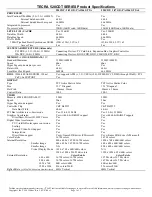
138
IBM Power 750 and 760 Technical Overview and Introduction
Improved Live Partition Mobility benefits
The possibility to move partitions between POWER6, , POWER7, and
processor-based servers greatly facilitates the deployment of processor-based
servers, as follows:
Installation of the new server can be done while the application is executing on a
POWER6, , or POWER7 server. After the processor-based server
is ready, the application can be migrated to its new hosting server without application
down time.
When adding processor-based servers to a POWER6 and POWER7
environment, you get the additional flexibility to perform workload balancing across the
entire set of POWER6, , POWER7, and processor-based servers.
When doing server maintenance, you get the additional flexibility to use POWER7 servers
for hosting applications usually hosted on processor-based servers, allowing
you to perform this maintenance with no interruption to application availability.
For more information about Live Partition Mobility and how to implement it, see IBM PowerVM
Live Partition Mobility, SG24-7460.
3.4.6 Active Memory Sharing
Active Memory Sharing is an IBM PowerVM advanced memory virtualization technology that
provides system memory virtualization capabilities to IBM Power Systems, allowing multiple
partitions to share a common pool of physical memory.
Active Memory Sharing is available only with the Enterprise version of PowerVM.
The physical memory of an IBM Power System can be assigned to multiple partitions in either
dedicated or shared mode. The system administrator has the capability to assign some
physical memory to a partition and some physical memory to a pool that is shared by other
partitions. A single partition can have either dedicated or shared memory:
With a pure dedicated memory model, the task of the system administrator is to optimize
available memory distribution among partitions. When a partition suffers degradation
because of memory constraints and other partitions have unused memory, the
administrator can manually issue a dynamic memory reconfiguration.
With a shared memory model, the system automatically decides the optimal distribution of
the physical memory to partitions and adjusts the memory assignment based on partition
load. The administrator reserves physical memory for the shared memory pool, assigns
partitions to the pool, and provides access limits to the pool.
Active Memory Sharing can be used to increase memory utilization on the system either by
decreasing the global memory requirement or by allowing the creation of additional partitions
on an existing system. Active Memory Sharing can be used in parallel with Active Memory
Expansion on a system running a mixed workload of several operating system. For example,
AIX partitions can take advantage of Active Memory Expansion. Other operating systems
take advantage of Active Memory Sharing also.
For additional information regarding Active Memory Sharing, see IBM PowerVM Virtualization
Active Memory Sharing, REDP-4470.
















































